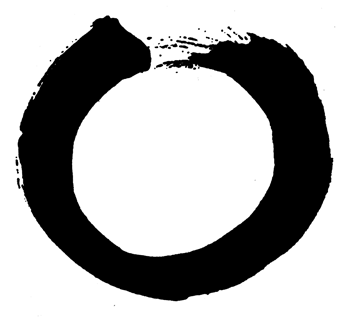As I noted in my last post, we often go astray with our learning initiatives because we fail to properly orient ourselves to the learning/performance environment. While ADDIE or ISD might look like an overblown, time-wasting toolkit, we need to realize that we do not need every tool within that kit. Every project requires a different set of tools. However, there are a few basic ones that will give you direct intuitive insight into the problem at hand. While there are several Zen rules that govern the aesthetics of Japanese gardens and other art forms in Japan, five of them can be directly applied to ADDIE to aid you in creating an energized, but calm learning platform (inspired by a Presentation Zen post).
Analysis = Shizen (自然)

Shizen means naturalness in that it avoids artificial construction. This means analysis must be sought for and expressed in a plain, simple, and natural manner. To get to its natural roots, describe the business need in terms of the performance desired and where they are now. Everything between their present state and desired performance is the performance gap. This gap must be bridged by identifying the skills and knowledge that enable the learners to perform.
Shizen also applies to the learners. Learning becomes difficult when we have to learn new concepts because we have no relationship to them, thus we construct artificial backgrounds. However, when we relate to a new concept naturally by linking it to an experience that is familiar to us, then we learn much faster and deeper. This is why we need to capture the present performance of the learners so that we can create “Advance Organizers” that will link the learner's new knowledge to this present performance or knowledge level. Learners who are given Advance Organizers at the beginning of a learning process have been shown to increase transfer of training.
Design = Shibui/Shibumi (渋味)

Shibui is coolness and beauty through a clear design and nothing more. Think of design as minimalist that articulates brevity. If you decorate or carry it beyond what it was meant to be, then it becomes gauche rather than deco. Think lean by identify the minimal steps and activities that will enable the learners to master the performance rather than rather than overdoing it by including every possibility. To help transform the learning from an activity to a process and reduce the complexity of training; determine the support, such as tools and performance aids, they will need to enable their performance in the workplace.
Development = Fukinsei (均整)

Fukinsei means asymmetry or irregularity. Controlling balance through the use of irregularity and asymmetry is a central belief in Zen aesthetics. For example, the enso or Zen circle is often incomplete to symbolize the asymmetry. Too often we try so hard to create the perfect learning platform by filling in all the blanks that it fails to draw the learners in — we tend to be drawn in more when we can fill in some of the blanks on our own. Designers also tend to carry it to the extreme by adding too much content — it overwhelms the learners with too much information. Thus we need to strive for some incompleteness, irregularity, and/or asymmetry in order to draw the soon-to-be performers into the learning process.
Fukinsei design also implies a deductive approach. That is, rather than being presented with a complete set of concepts, rules, and strategies, that explicitly instructs the learners, they must explore and experiment with the task to infer and learn the rules, principles, and strategies for effective performance (discovery or experimental learning). This approach has been shown to build “Adaptive Expertise” — becoming more adaptable in order to solve unstructured and ill-defined problems. Also closely related to this is “Error-based Learning” to allow for more control processing.
“Nature itself is full of beauty and harmonious
relationships that are asymmetrical yet balanced.
This is a dynamic beauty that attracts and engages.”
- Garr Reynolds
Implement = Kanso (簡素)
Kanso means simplicity by eliminating the unneeded things (clutter) to find the clear structure. Clear structure does not necessarily mean a linear list, but rather a choice of options. However, when it comes to practicing the skills, ensure it includes whole-task practice that will help to carry performance to the workplace.
A Kanso style choice of options is also critical as providing learner control has been shown to also build “Adaptive Expertise.”
Evaluation = Seijaku (静寂)

Seijaku is tranquility or an energized calm. An effective learning platform should bring a sense of peace to the organization by eliminating the gap between the present performance and the desired performance identified in the analysis phase. The use of iterations will allow you to quickly lower the unintentional noise and disturbance. Continue iterating until the disturbance has been transformed into the desired state of tranquility.
Seijaku should also be carried one step farther — having the learners participate by monitoring and evaluating in order to help them increase their metacognitive skills.
Picture Credits
deco by Ohad. enso circle by Vibhav. bamboo/rocks and dock by istock. pods and bento by me.


2 comments:
Great post Donald. I love the Presentation Zen blog. So much of what he talks about can be applied to eLearning design.
This is a post I need to keep in my back pocket for all those times when SME's and Execs think that a course should cover everything including the kitchen sink. I'm working on emphasizing the use of job aids like you mentioned since they can't possibly retain every detail of an eLearning course. Job Aids are a resource for all the details and eLearning is to practice the performance, not just deliver the info.
Thanks Joe. I agree with you on the Job Aids - they are probably one of the most underutilized tools in our kit.
Post a Comment